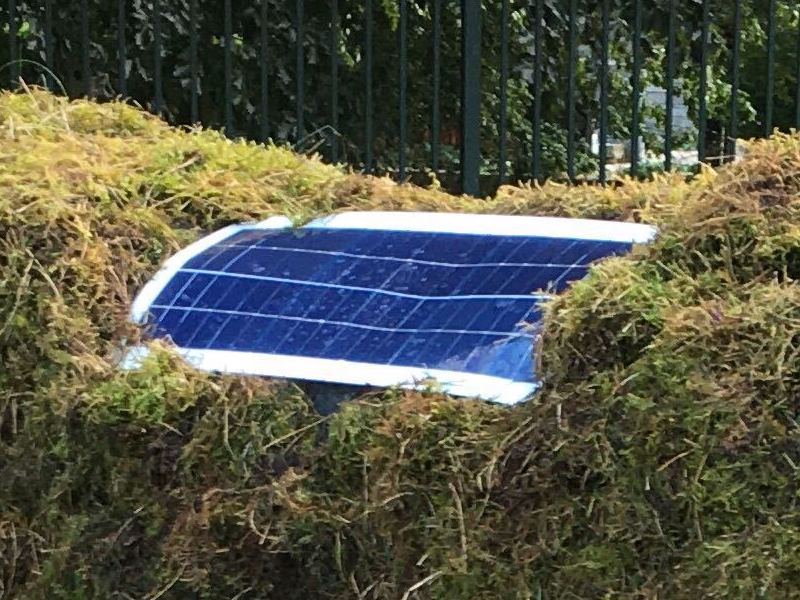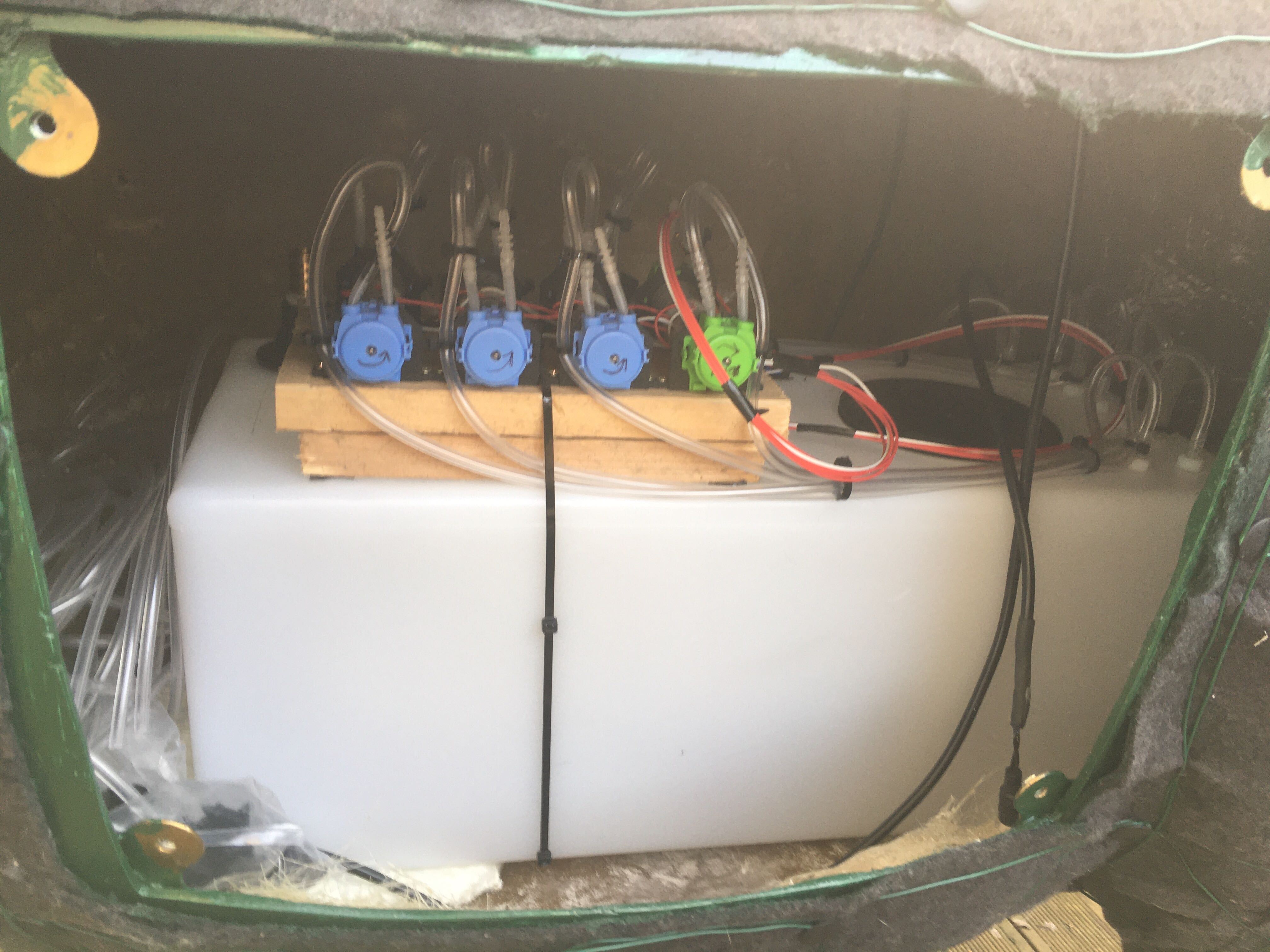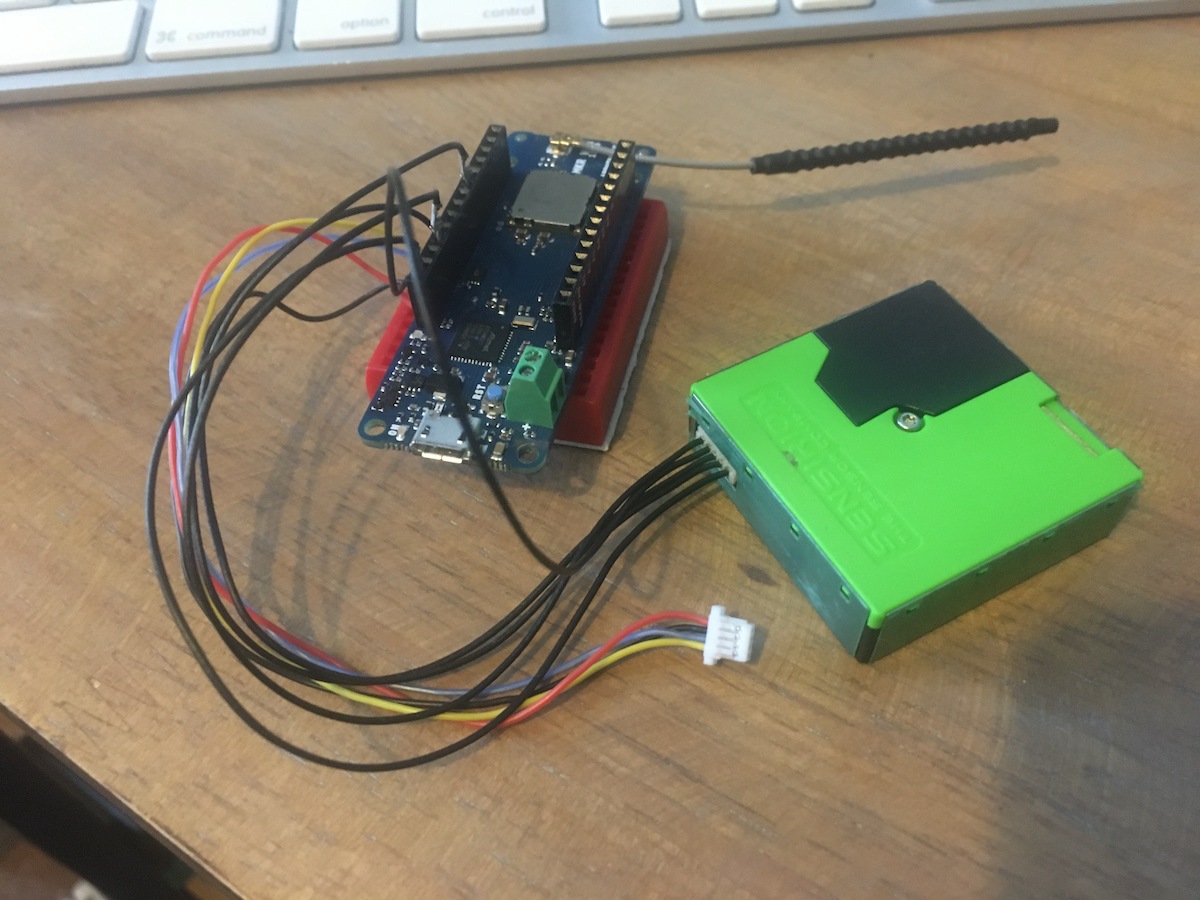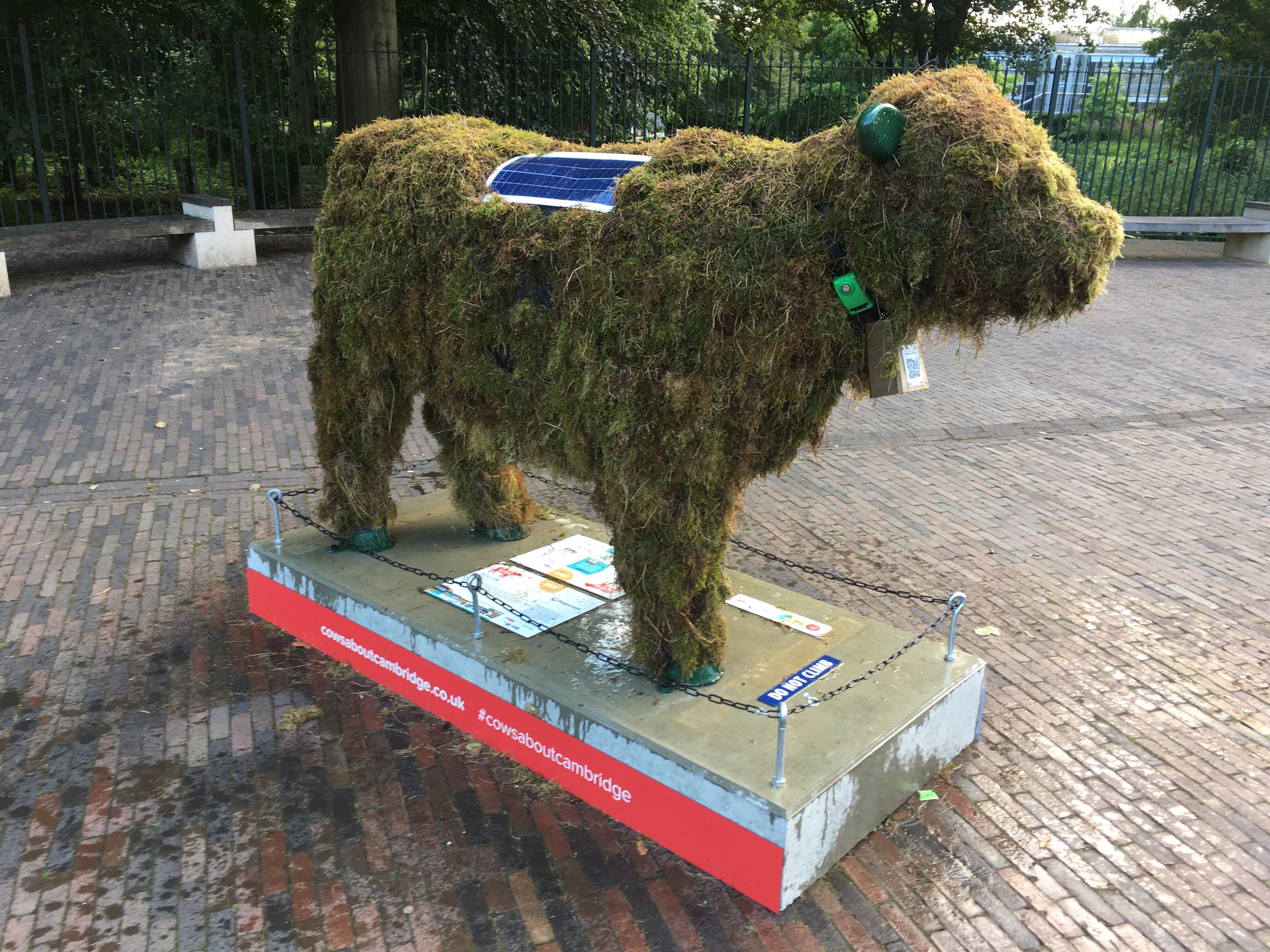

The two solar panels on Moss Cow's back charge the battery that runs the water pumps and the air quality sensor.
The panels deliver about 1W during daylight hours, so about 10Wh a day. The sensor and pump controller use about 5Wh over 24 hours, leaving about 5Wh for the pumps. The pumps consume 10W when they're running, so they can run for a total of 30 mins a day, or 10 seconds every eight minutes.

Inside the Moss cow is a 30-litre tank for keeping the moss watered. Eight pumps on top of the tank deliver the water up through tubes to nozzles along the cow's back.
The pumps are called peristaltic pumps. They use small rollers to squeeze the water along a flexible tube.
In hot and sunny weather, the moss needs more water then the pumps can deliver, so Chris drops by and waters the cow by hand.

Inside the cowbell is an air quality sensor, supplied by open-seneca. They are a Cambridge-based organisation that supplies low-cost sensors to communities around the world so they can use citizen science to monitor their local air quality.
The green box is the sensor. It sucks in air and analyses it for tiny 2.5-micron particles - the ones that are most harmful to our health. It's connected to a small Arduino computer that runs the sensor every 10 minutes and uses the antenna you can see at the top to transmit the reading to this website via The Things Network

The plastic cow is covered in water-retaining fabric - the same material used by garden centres to keep pots moist. The moss is held in place by wires wrapped around the cow.
Before the moss was wired onto the cow, the fabric was painted in a mixture of yoghurt, fresh cow dung and water, which gives the moss lots of nutrients to feed on.